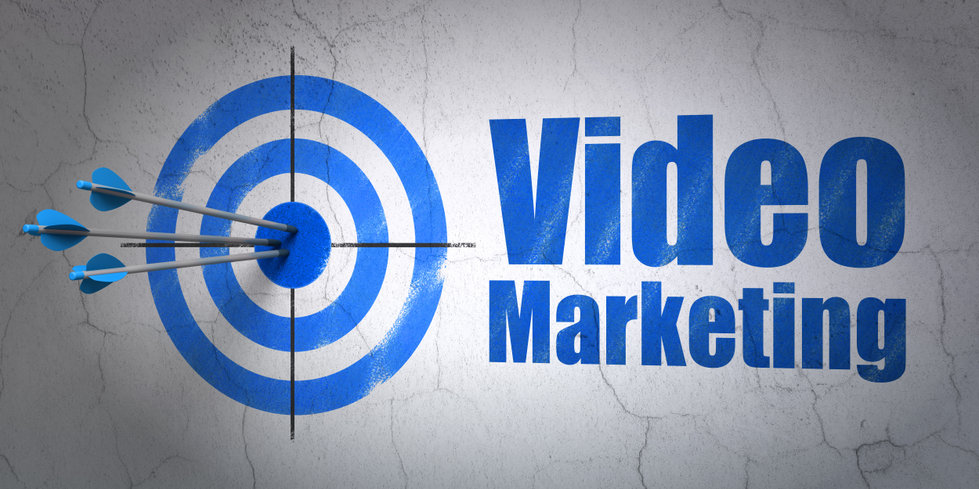
The average person spends an estimated 100 minutes per day watching videos online. Video production and accessibility have boomed as streaming capabilities have grown across a wide variety of devices and mediums. People respond to video for good reason: it is eye-catching, attention-getting and proven to help viewers gather and retain information. In fact, according to Invisia, viewers retain 95 percent of a message when they watch it via video, compared to 10 percent when reading just written copy. That said, the effectiveness of a marketing video wholly depends on the strategy behind it. Do you have a video marketing strategy that delivers results?
5-Step Checklist for Your Video Marketing Strategy

Businesses have experienced the benefits of video since early in the digital age. Reaping the rewards takes more than just posting videos without a plan. Whether evaluating a longstanding video marketing strategy or just getting started, use the following checklist to strategically integrate video as a tool in your marketing arsenal.
- Establish a compelling and clear value proposition.
A value proposition is an important first step for creating a meaningful connection with prospects and clients through content. It is a promise of the value you deliver to your customers. A successful value proposition explains how your products and services solve customers’ problems, what specific benefits you deliver and what makes you different from and better than the competition. Customer-facing messages of all kinds are founded on this value proposition and videos are no exception.
- Identify goals and key performance indicators.
There are many different types of marketing videos including brand videos, how-to videos, case studies, testimonials, product demonstrations, interviews, podcasts, event videos, livestreams and personalized video messages. Each video serves a different purpose so it’s important to establish goals from the get-go. When creating videos, ask yourself, “What is the objective of this content? What do we want to accomplish?” Once goals have been identified, establish key performance indicators (KPIs) and metrics to effectively measure video marketing campaigns for success. Relevant KPIs include the number of views, engagement, bounce rate, social media shares and conversion rate. No matter the type of video, focus on providing relevant information at the appropriate stage of the sales funnel to deliver the right content at the right time.
- Understand your target audiences.
Understanding your target markets and audiences goes hand in hand with any marketing tactic. To make the most out of video content, it’s essential to examine the user experience from the prospect’s point of view. Ask yourself who is the ideal viewer and what are they looking for? Use known insights and industry research to understand where your expertise is best suited. Ask sales teams what issues their prospects are most concerned about and seek to provide solutions. Aim to understand the pain points of current and potential customers. Then use video to communicate authentically how your company can solve those challenges.
- Harness the right video production talent.
While video is growing exponentially in use and consumption, to deliver professional quality, video development still requires distinct equipment and skillsets across multiple areas. Video production involves the right kind of audio-visual recording equipment and software. Other needs can include script writers, directors, cameramen, studio or set access, actors, voiceovers or animation. From there, editing and distribution require their own unique expertise. Most businesses do not have their own studio or an internal team of video-production talent. Consider what budget, personnel and resources are necessary to produce the videos you are looking for and don’t be afraid to outsource for the right talent.
- Distribute videos consistently across multiple channels.
Videos that don’t find their way to the right audiences won’t deliver results. Ensure your video marketing strategy includes a clear distribution process that leverages multiple channels such as your website, social media, email or known video platforms such as YouTube or Vimeo. According to Wyzowl, YouTube is used by 88 percent of video marketers, making it the most widely used platform for video marketing, followed by social media platforms including LinkedIn, Instagram, Facebook and TikTok. Webinars and livestreams are also popular distribution methods. Just like companies need to determine the ideal frequency for blogs or email newsletters, the same is true for video. Plan a consistent frequency of video content distribution to deliver a steady stream of messaging to interested audiences.
Humanize Your Brand through Video Content

Leading technology solutions provider Cisco reports that video will represent 82 percent of all consumer internet traffic this year. As one of the most engaging mediums for internet users, video stands out as one of the most powerful marketing tools available. That said, to deliver results, it requires expertise, resources and a clear set of goals. Leverage a clearly identified video marketing strategy to create a meaningful and authentic connection with target audiences. By humanizing your brand through the powerful medium of video, you can add another level of value to your marketing communications strategy.
